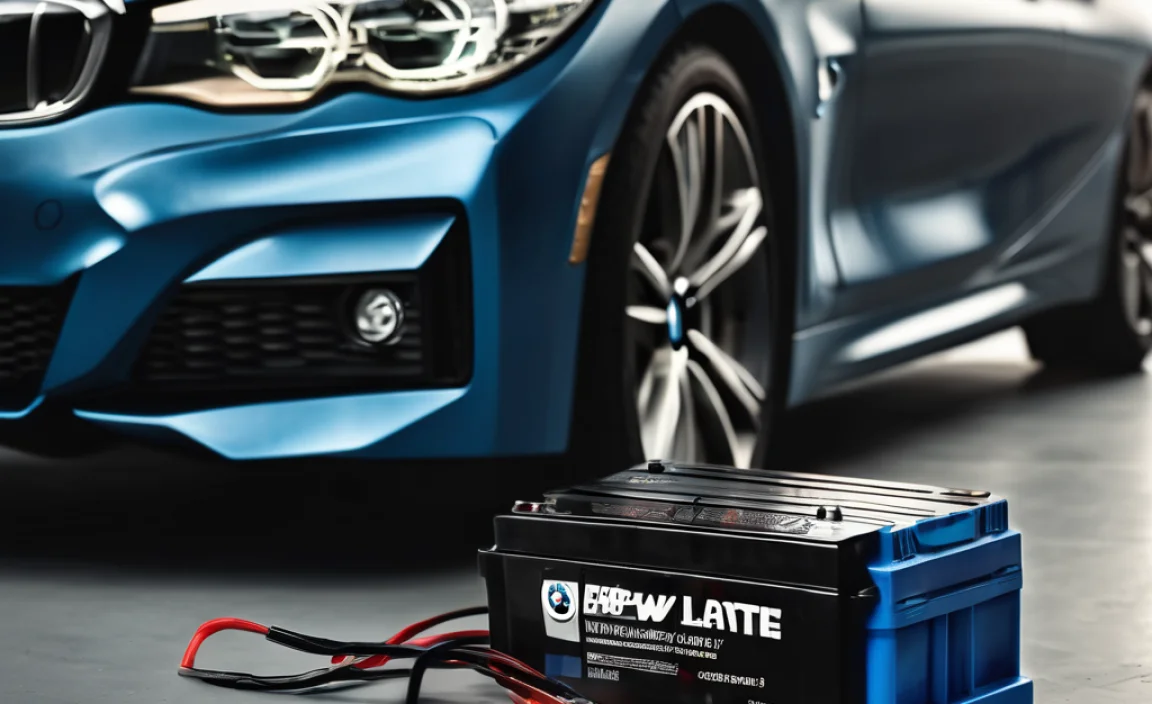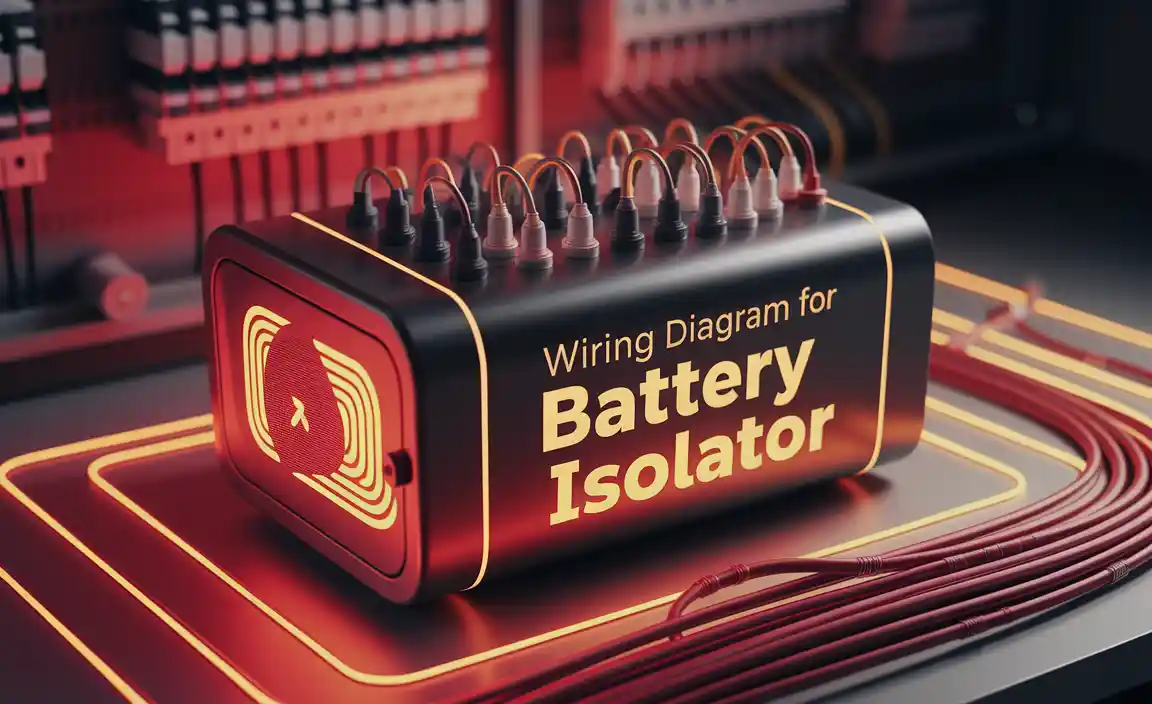Quick Summary:
Choosing the right battery for your 12-volt Power Wheels is key to “proven power” and extended playtime. Look for rechargeable sealed lead-acid (SLA) batteries with the correct voltage and amperage-hour (Ah) rating. Ensure it fits securely and matches the connector type for optimal performance and safety, giving your little drivers the joy of uninterrupted adventure.
Unlocking Endless Fun: The Best Battery for Your 12 Volt Power Wheel
Got a 12-volt Power Wheel that’s lost its zip? Don’t let a tired battery put a damper on your child’s playtime! Finding the right replacement battery is simpler than you think, and it’s the secret to “proven power” that keeps the fun rolling. We’re here to guide you through it, making sure you pick a battery that’s safe, reliable, and perfect for those exciting adventures. No confusing jargon, just clear, practical steps to get your 12-volt Power Wheel zipping and zooming again. Read on to discover how to choose the best battery and unleash hours of smiles!
Why Your 12 Volt Power Wheel Needs the Right Battery
That cheerful hum and quick acceleration of a Power Wheel come directly from its battery. Over time, like any rechargeable battery, the original one can start to fade. This might mean shorter playtimes, slower speeds, or even a complete stop on the driveway. It’s a common issue for parents and grandparents who want their little ones to continue enjoying their ride-on toys. The good news is that replacing the battery often brings the Power Wheel back to life, offering “proven power” that feels almost brand new.
Choosing the correct battery isn’t just about getting the toy working again; it’s also about safety and compatibility. Using the wrong type of battery can be ineffective or, worse, dangerous. We’ll walk you through what to look for, what to avoid, and how to ensure you’re getting the best value for your investment.
Understanding Your Power Wheel Battery: The Basics
Before we dive into choosing a new one, let’s quickly look at what powers your child’s favorite ride-on toy. Most 12-volt Power Wheels use a specific type of battery designed for this purpose.
What is a 12 Volt Battery?
The “12 Volt” in “12 volt Power Wheel battery” refers to the electrical potential difference, or voltage, the battery provides. Think of voltage as the “push” that electricity needs to flow. A 12-volt system is standard for many ride-on toys like Power Wheels because it offers a good balance of power and safety for younger children.
Sealed Lead-Acid (SLA) Batteries: The Standard Choice
The most common type of battery found in 12-volt Power Wheels is a Sealed Lead-Acid (SLA) battery. These are popular for several reasons:
Rechargeable: They can be easily recharged, making them cost-effective and environmentally friendly compared to disposable batteries.
Safe: They are “sealed,” meaning the acid inside is contained and won’t leak under normal use. This is vital for a toy used by children.
Durable: They are built to withstand vibrations and movement common in toys.
Consistent Power: They provide a steady stream of power, ensuring a smooth ride.
You might see them labeled as “SLA,” “VRLA” (Valve Regulated Lead Acid), or “AGM” (Absorbent Glass Mat), which are all variations of sealed lead-acid technology.
Amperage-Hour (Ah) Rating: How Much “Juice”?
Another crucial number on a battery is its Amperage-hour (Ah) rating. This tells you how much energy the battery can store. A higher Ah rating means the battery can provide power for a longer time.
For example, a 12V 7Ah battery can theoretically supply 7 amps of current for one hour, or 1 amp for seven hours. If your original battery was 12V 7Ah, upgrading to a 12V 9Ah or 12V 12Ah battery (if it physically fits and the charger can handle it) could potentially give you longer runtimes between charges. However, the physical size and connector type are still the most important factors for compatibility.
How to Identify the Right Battery for Your 12 Volt Power Wheel
Replacing your Power Wheel battery is straightforward if you know what to look for. Here’s your guide to finding the “proven power” solution.
Step 1: Check Your Current Battery
The easiest and most reliable way to find a compatible replacement is to look at the battery currently in the Power Wheel.
Voltage: It will clearly state “12V” on it. This is non-negotiable. You must match the voltage.
Amperage-Hour (Ah) Rating: Note this number (e.g., 7Ah, 9Ah, 12Ah). While you can sometimes use a slightly higher Ah rating for longer runtimes, don’t go lower.
Physical Size: Measure its dimensions (height, width, length) carefully. Replacement batteries need to fit snugly in the battery compartment.
Connector Type: Examine the terminals and the wires that connect to them. Is it a spade connector, a specific plug, or screw terminals? Make sure the new battery has the same or a compatible connector.
Many batteries will have a label with all this information clearly printed on them. If the label is worn, you’ll need to rely on measurements and your Power Wheel’s model number.
Step 2: Consult Your Power Wheel Manual or Manufacturer’s Website
If you can’t find the information on the battery itself, or if it’s missing, your next best bet is the Power Wheel’s manual. It will specify the correct battery type, voltage, and often the dimensions or part number. You can usually find these manuals online by searching for your Power Wheel’s model number.
For example, if you have a Power Wheels Dune Racer, searching “Power Wheels Dune Racer battery type” can lead you to the exact specifications.
Step 3: Use the Power Wheel Model Number to Search
Every Power Wheel has a unique model number, usually found on a sticker on the underside or inside the battery compartment. Use this number to search online retailers or directly on the official Power Wheels website (or Mattel’s consumer site) for replacement parts. This is a foolproof way to find a battery confirmed to work with your specific model.
Step 4: Consider Battery Dimensions and Terminal Orientation
When comparing potential replacement batteries online, pay close attention to the dimensions and the placement of the positive (+) and negative (-) terminals.
Dimensions: Always double-check the physical size. A battery that’s too big won’t fit, and one that’s too small might not be secure.
Terminal Orientation: The positive and negative terminals need to align with your Power Wheel’s wiring harness. If the terminals are on the opposite sides or in a different arrangement, it might not work, even if the voltage and Ah are correct.
Terminal Type: Ensure the terminal type matches the connector on your Power Wheel’s wiring. Common types include F1, F2 spade terminals, or sometimes proprietary connectors.
This detailed check ensures a good fit and prevents potential wiring issues.
Key Specifications to Look For in a Replacement Battery
Let’s break down the crucial specs to ensure you’re getting the right “proven power.”
Essential Battery Specifications Table
| Specification | What it Means | Why it Matters for Your Power Wheel | Example Values for a 12V Power Wheel |
| :——————- | :—————————————————————————- | :————————————————————————————————————————————————————————— | :———————————– |
| Voltage (V) | The electrical “push” the battery provides. | MUST MATCH: Using a battery with the wrong voltage can damage the Power Wheel’s electronics or charger. Always use a 12V battery for a 12V Power Wheel. | 12V |
| Ampere-Hour (Ah) | The battery’s capacity; how long it can supply a certain amount of current. | Higher Ah means longer playtime. Going slightly higher than original is usually okay if dimensions and connectors match. Never go lower. | 7Ah, 9Ah, 12Ah |
| Terminal Type | The design of the positive and negative connectors on the battery. | Must match the connector on your Power Wheel’s wiring harness for a secure connection. Common types are F1 and F2 spade terminals. | F1, F2 Spade Terminals |
| Dimensions (LxWxH) | The physical size of the battery. | The battery must fit securely into the designated compartment within the Power Wheel. Measure your old battery or the compartment itself. | Varies (e.g., 6″ x 3.5″ x 3.75″) |
| Chemistry | The type of materials used to store and release energy. | For Power Wheels, you want Sealed Lead-Acid (SLA) for safety and rechargeability. Avoid Lithium-ion unless explicitly stated as compatible by the manufacturer. | Sealed Lead-Acid (SLA) |
| Brand/Reputation | The manufacturer of the battery. | Reputable brands often mean better quality control, longer lifespan, and more consistent performance, contributing to reliable “proven power.” | Interstate, Deka, Yuasa, ACDelco |
Choosing the Right Ah Rating
You’ll often find batteries with ratings like 7Ah, 9Ah, or 12Ah for 12V systems.
If your original battery was 7Ah: A 9Ah or 12Ah battery of the same physical dimensions and connector type will likely work and provide longer runtimes.
If you can’t find a battery with the exact Ah rating: It’s generally safer to opt for one with a slightly higher Ah rating, as this only increases playtime and capacity. A lower Ah rating might not provide enough power for the duration expected.
Understanding Terminal Types
The “F” ratings (F1 and F2) refer to the width of the spade terminals:
F1: Generally 0.187 inches (4.75 mm) wide.
F2: Generally 0.250 inches (6.35 mm) wide.
Check your Power Wheel’s wiring harness connector to see which type it is. If you’re unsure, you can often adapt connectors with a simple terminal adapter, but matching it directly is always the easiest solution.
Where to Buy a Battery for Your 12 Volt Power Wheel
Once you know what you need, where do you get it?
Online Retailers
Websites like Amazon, eBay, and specialized battery stores are excellent resources. They offer a wide selection from various brands and often have detailed product descriptions, including dimensions and terminal types. Look for sellers with good reviews.
Specialty Battery Stores
Local battery shops are invaluable. Their staff are battery experts and can help you identify the right battery even if you only bring in the old one. They often carry high-quality, reliable batteries.
Electronics Stores
Some larger electronics retailers might carry common SLA batteries suitable for Power Wheels.
Directly from the Manufacturer
While sometimes more expensive, buying directly from the Power Wheels (Mattel) parts department or their recommended suppliers ensures a perfect fit.
Safety First: Tips for Handling and Installing Your New Battery
New batteries mean new fun, but safety is paramount when dealing with any electrical component.
Safety Precautions
- Eye Protection: Always wear safety glasses when working with batteries.
- Ventilation: Work in a well-ventilated area, as batteries can emit small amounts of gas.
- Avoid Sparks: Never smoke or have open flames near a battery. Tools or jewelry can create sparks that ignite flammable gases.
- Keep Clean: Ensure no metal objects touch both terminals of the battery simultaneously, as this can cause a short circuit and sparks.
- Disconnect Charger: Always ensure the charger is unplugged before connecting or disconnecting the battery.
Installation Steps
1. Unplug Everything: Make sure the Power Wheel is completely turned off and unplugged from any charger.
2. Locate the Battery: Open the compartment where the battery is stored. This might be under a seat or a hood panel. You may need a screwdriver to remove screws.
3. Disconnect the Old Battery: Carefully note which wire connects to which terminal (usually red for positive (+), black for negative (-)) and disconnect them. Sometimes, you might need pliers to gently twist and pull the connectors off.
4. Remove the Old Battery: Lift the old battery out. It might be heavy, so be cautious.
5. Place the New Battery: Position the new battery in the compartment, ensuring it’s secure and the terminals are oriented correctly.
6. Connect the New Battery: Attach the red wire to the positive (+) terminal and the black wire to the negative (-) terminal. Ensure the connections are snug.
7. Secure the Battery: If the battery came with a strap or bracket, secure it to prevent movement.
8. Close Up: Replace any panels or covers.
9. Charge Fully: Before the first use, fully charge the new battery according to the manufacturer’s instructions. This is crucial for its lifespan.
This process is designed to be straightforward, ensuring you can get back to playtime with confidence.
Maximizing Your 12 Volt Power Wheel Battery Lifespan
Getting the right battery is half the battle; maintaining it is the other half. Here are some tips for “proven power” that lasts:
Proper Charging Habits
Use the Correct Charger: Always use the charger specifically designed for your Power Wheel or a compatible 12V SLA charger. Using the wrong charger can damage the new battery. You can find reliable chargers from brands like Kid Trax or officially recommended ones.
Full Charges: Charge the battery completely after each use, even if your child didn’t play for long.
Avoid Deep Discharges: Don’t let the battery sit completely drained for extended periods. If playtime is over for the season, charge it first.
Don’t Overcharge: Modern chargers are designed to stop charging when full, but it’s still good practice not to leave it connected for days on end if not necessary.
Storage and Maintenance
Storage Location: If storing the Power Wheel for an extended period (e.g., winter), store the battery in a cool, dry place, away from extreme temperatures. Charge it fully before storage and periodically (every 3-6 months) during storage.
Keep Terminals Clean: Occasionally check the battery terminals for corrosion. Clean them with a wire brush if necessary.
Battery Type: Always stick to the recommended Sealed Lead-Acid (SLA) type for safety and performance. While lithium-ion batteries are becoming popular elsewhere, they require different charging systems and safety protocols, and are typically not compatible with standard Power Wheels without modifications.
Troubleshooting Common Battery Issues
Sometimes, even with the right setup, you might encounter problems.
Power Wheel Not Moving After Battery Replacement
Confirm connections are secure on both the battery and the Power Wheel’s wiring harness.
Ensure the new battery is fully charged. New batteries sometimes need an initial charge.
Double-check that you have the correct voltage (12V).
If you swapped a higher Ah battery, ensure it’s not physically too large and causing a short or interference.
Short Playtimes
The battery might be old and nearing the end of its life.
The charger might not be working correctly or fully charging the battery.
The surface the Power Wheel is used on could be too tough, draining the battery faster.
Consider if a battery with a higher Ah rating is needed, provided it fits and the charger is compatible.
Frequently Asked Questions (FAQ)
Q1: Can I use a different brand of battery than the original one for my 12 volt Power Wheel?
Yes, you can typically use a battery from a different reputable brand as long as it matches the voltage (12V), has the correct physical dimensions, the same or a higher Ah rating, and the correct terminal type and orientation. Focus on Sealed Lead-Acid (SLA) chemistry.
Q2: What does it mean if my Power Wheel battery is very hot after charging?
A slightly warm battery after charging is normal due to the energy transfer. However, if it’s excessively hot to the touch, it could indicate a problem with the battery itself, the charger, or an internal short. Discontinue use immediately and consult a battery professional or the manufacturer.
Q3: How long should a 12 volt Power Wheel battery last?
With proper charging and maintenance, a 12V SLA battery typically lasts between 1 to 3 years. Factors like usage frequency, charging habits, and storage conditions significantly impact its lifespan.
Q4: Can I upgrade my 12 volt Power Wheel to a higher voltage battery, like 18V or 24V?
No, you should not. Power Wheels are designed for a specific voltage. Using a higher voltage battery can permanently damage the motors, wiring, and electronic components of the Power Wheel, and it’s a significant safety risk. Stick to the original voltage rating.



